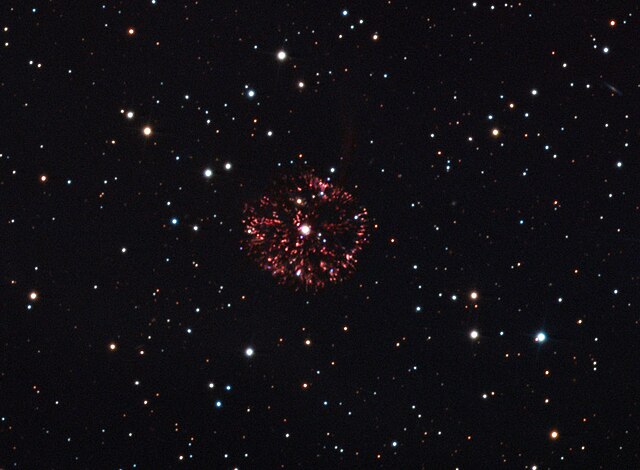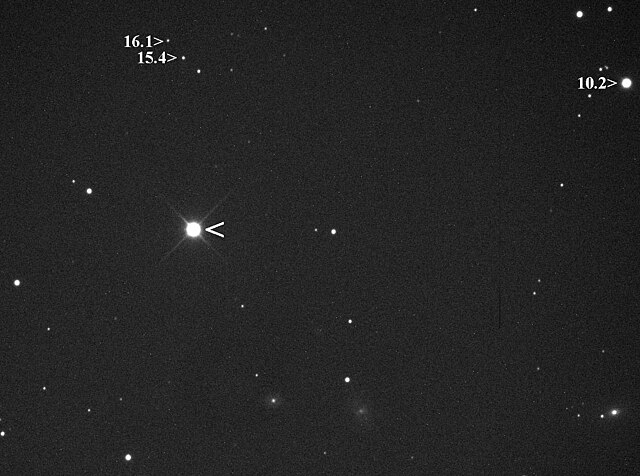GK Persei was a bright nova first observed on Earth in 1901. It was discovered by Thomas David Anderson, an Edinburgh clergyman, at 02:40 UT on 22 February 1901 when it was at magnitude 2.7. It reached a maximum magnitude of 0.2, the brightest nova of modern times until Nova Aquilae 1918. After fading into obscurity at about magnitude 12 to 13 during the early 20th century, GK Persei began displaying infrequent outbursts of 2 to 3 magnitudes. Since about 1980, these outbursts have become quite regular, typically lasting about two months and occurring about every three years. Thus, GK Persei seems to have changed from a classical nova like Nova Aquilae 1918 to something resembling a typical dwarf nova-type cataclysmic variable star.
GK Persei and the surrounding Firework nebula.
GK Persei by the 32-inch Schulman Telescope at the Mt. Lemmon Observatory.
A nova is a transient astronomical event that causes the sudden appearance of a bright, apparently "new" star that slowly fades over weeks or months. All observed novae involve white dwarfs in close binary systems, but causes of the dramatic appearance of a nova vary, depending on the circumstances of the two progenitor stars. The main sub-classes of novae are classical novae, recurrent novae (RNe), and dwarf novae. They are all considered to be cataclysmic variable stars.
Artist's conception of a white dwarf, right, accreting hydrogen from the Roche lobe of its larger companion star
Nova Eridani 2009 (apparent magnitude ~8.4)
GK Persei: Nova of 1901
Nova in Andromeda Galaxy





